We have arrived.
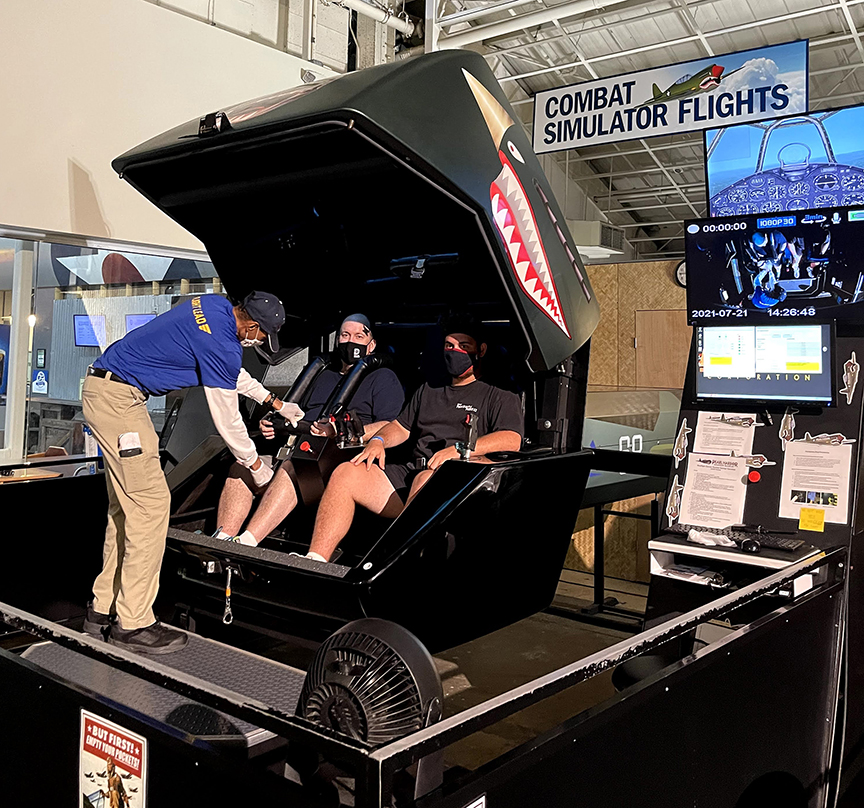
Kurtis surprised me with tix to do the Fighter Ace 360 Flight Sim.
When I took the controls, I made him regret it. I am a really bad pilot :)
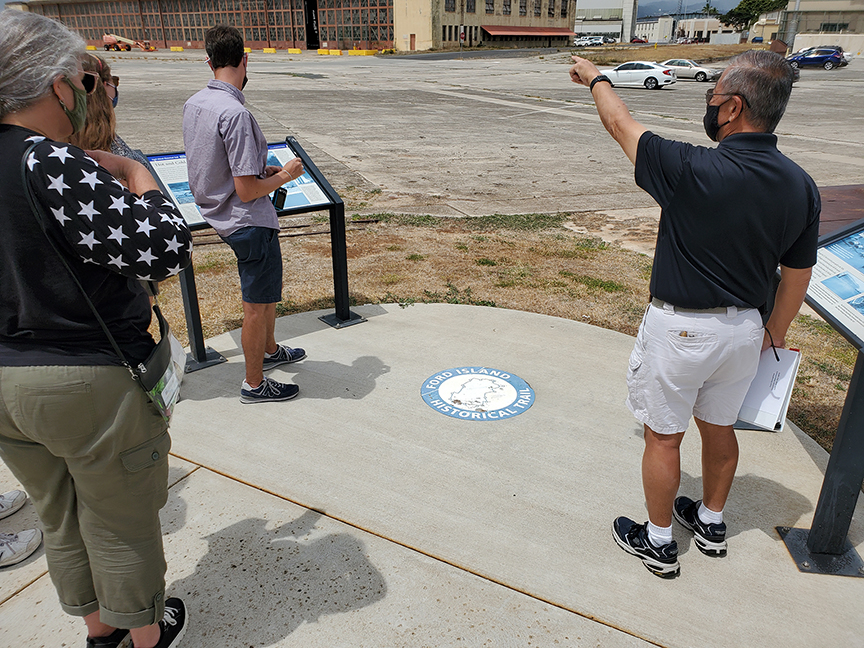
We are joined by our guide. Ford Ebesugawa, PHAM Youth and Scouts Program manager.
He has taken us to the location where the first bomb fell on Ford Island on December 7.
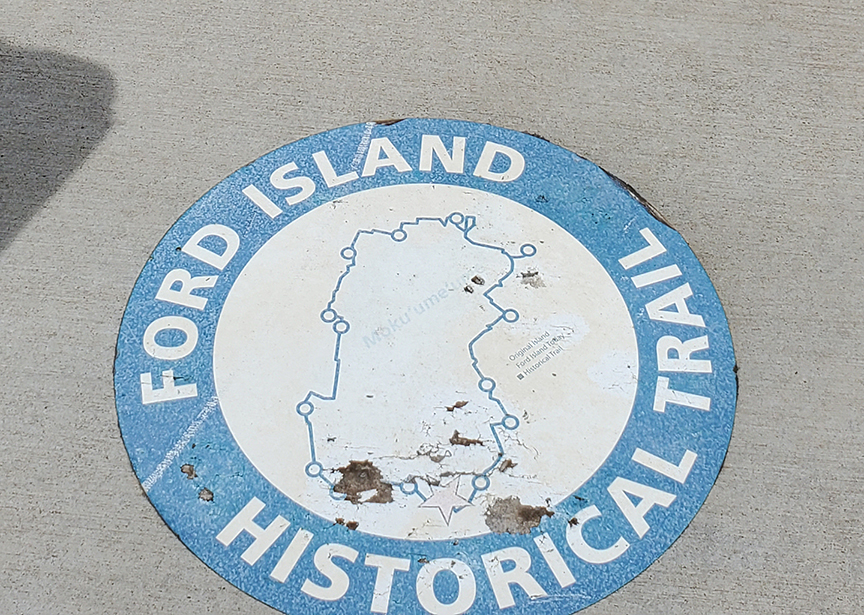
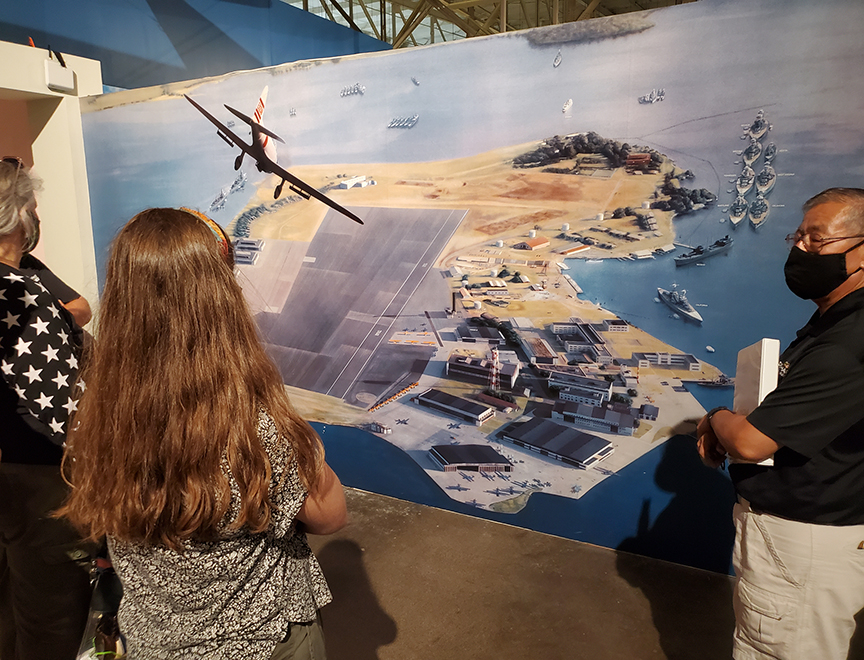
Artist depiction of the Japanese "Val" dive bomber that dropped the first bomb on Ford Island.
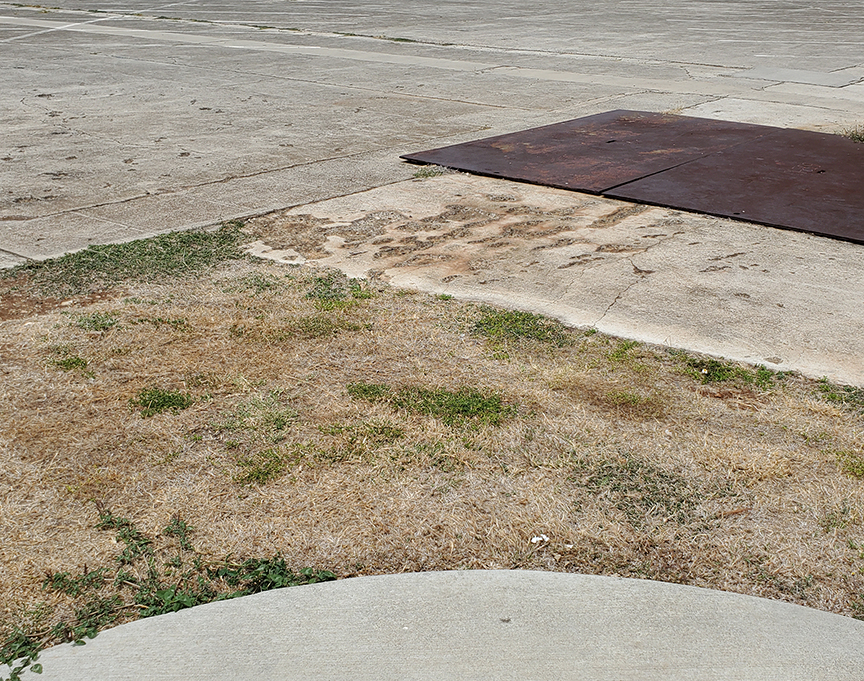
Scarring on the concrete where the bomb made impact.
WWII Ford Island aircraft hangar.
The hangar was used as a backdrop for action scenes in the movie PEARL HARBOR (2001). It was digitally blown up with SFX.
Ford pointing to our location on the Ford Island seaplane ramp.
Walking the seaplane ramp.
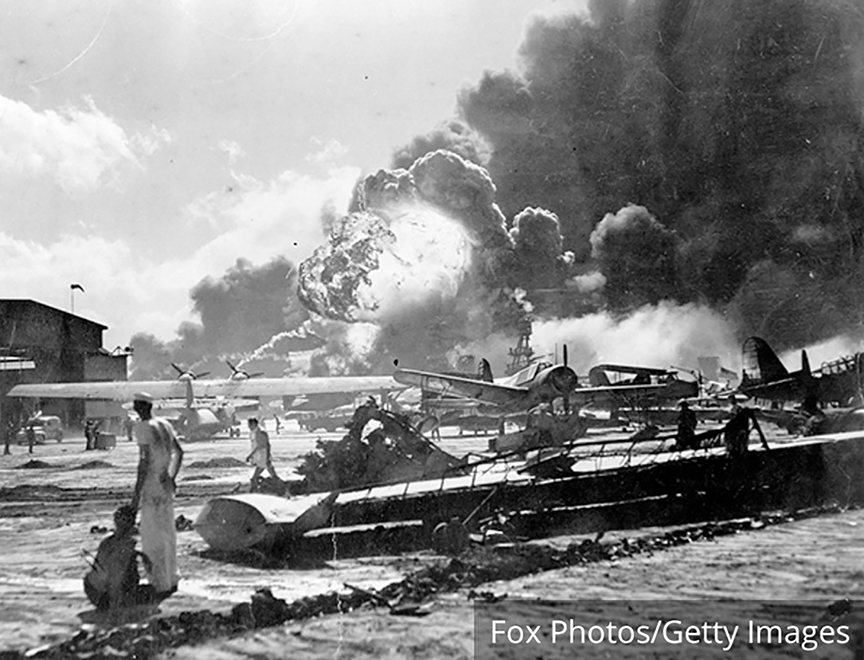
What the seaplane ramp and this area looked like on December 7.
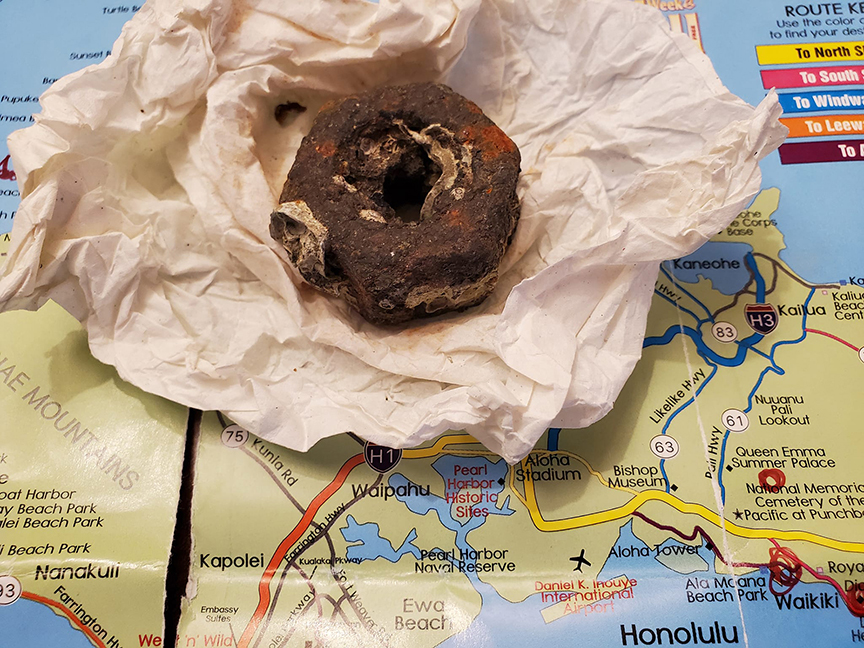
Ford found this artifact washed up on the seaplane ramp and gave it to me.
Based on its size and weight, I think it might've blown off a battleship moored nearby on December 7.
Machine gun impact trails on the seaplane ramp.
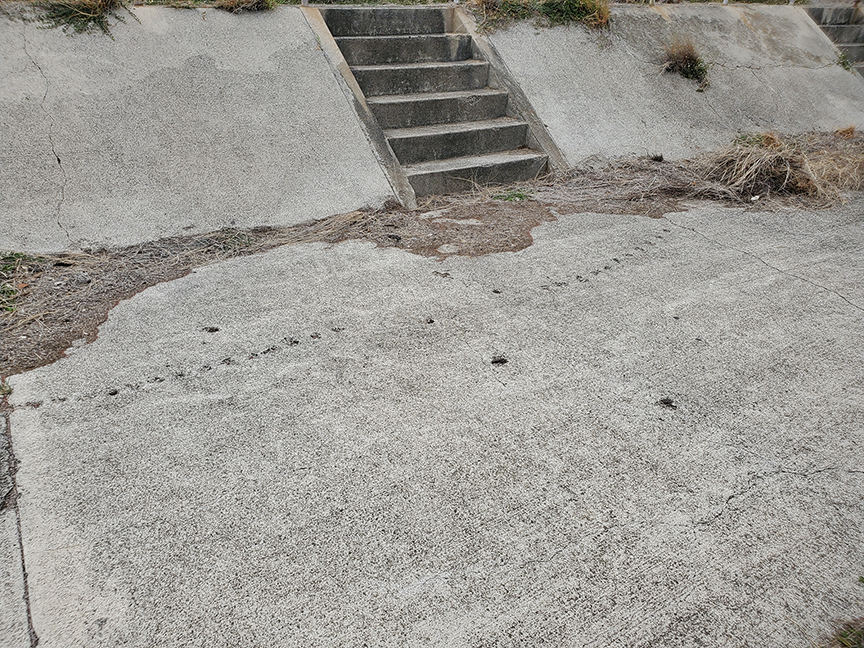
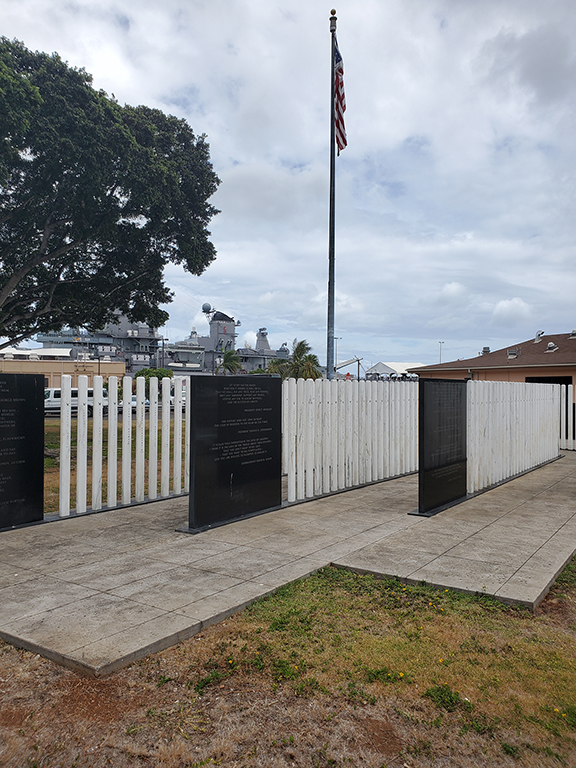
The USS Oklahoma Memorial near the entrance to the USS Missouri.
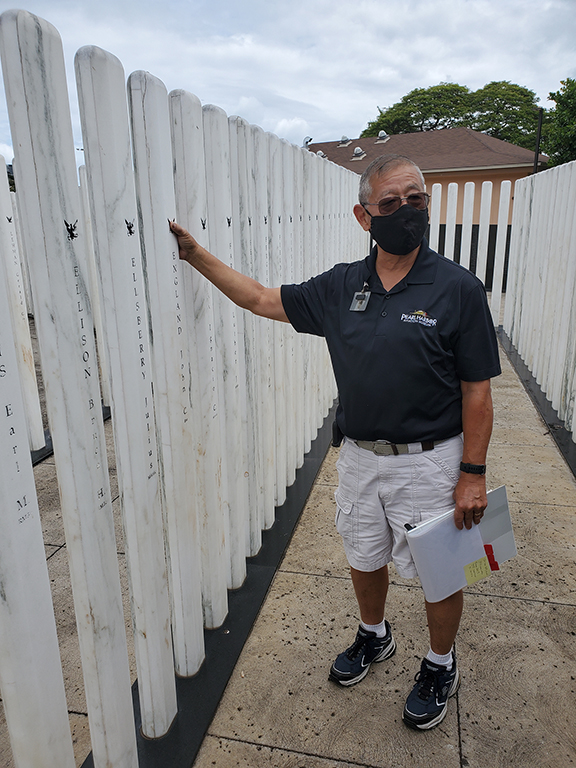
Ford telling stories about sailors we lost on December 7.
There are 429 marble posts memorializing each man killed on the USS Oklahoma during the battle.
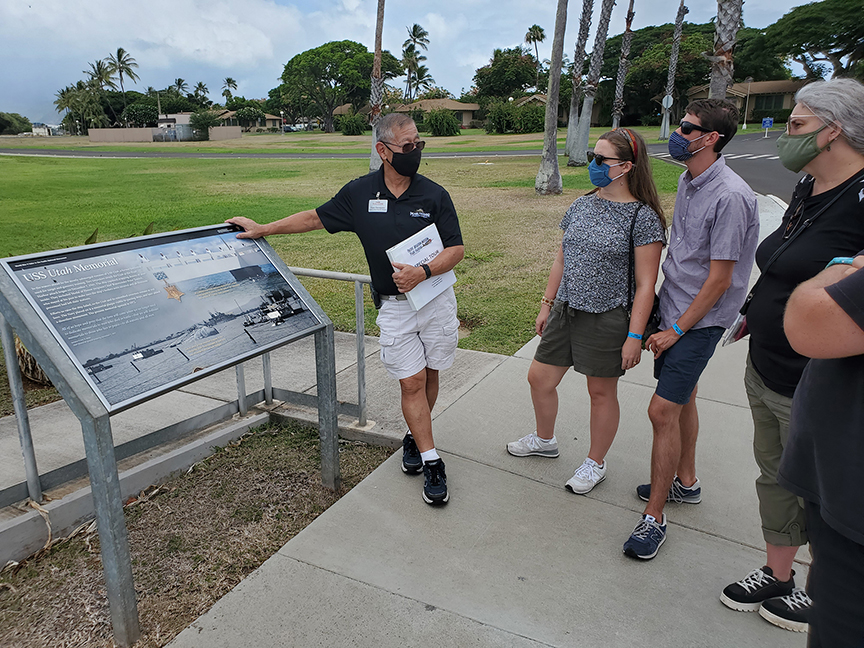
At the USS Utah Memorial on the east side of Ford Island.
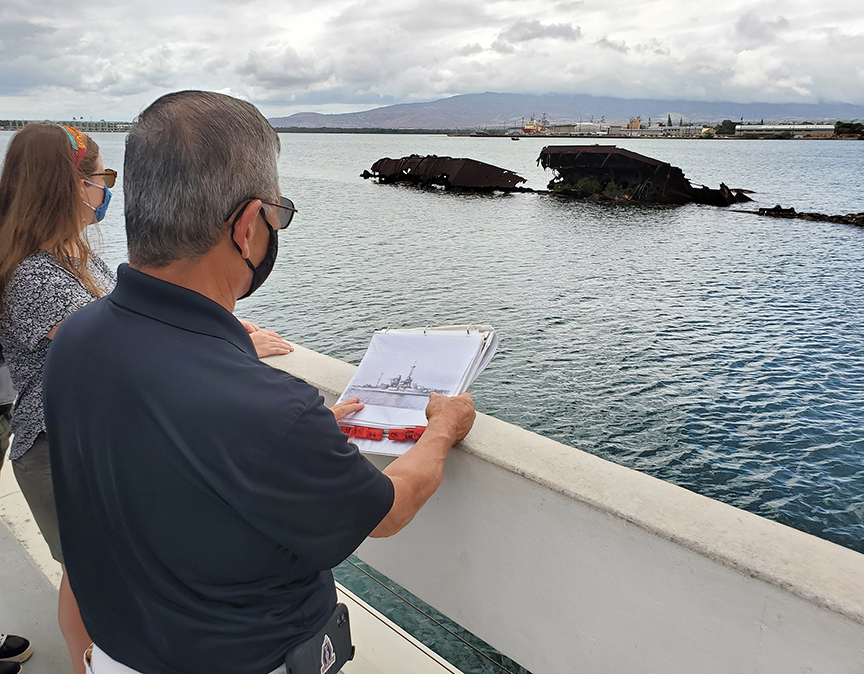
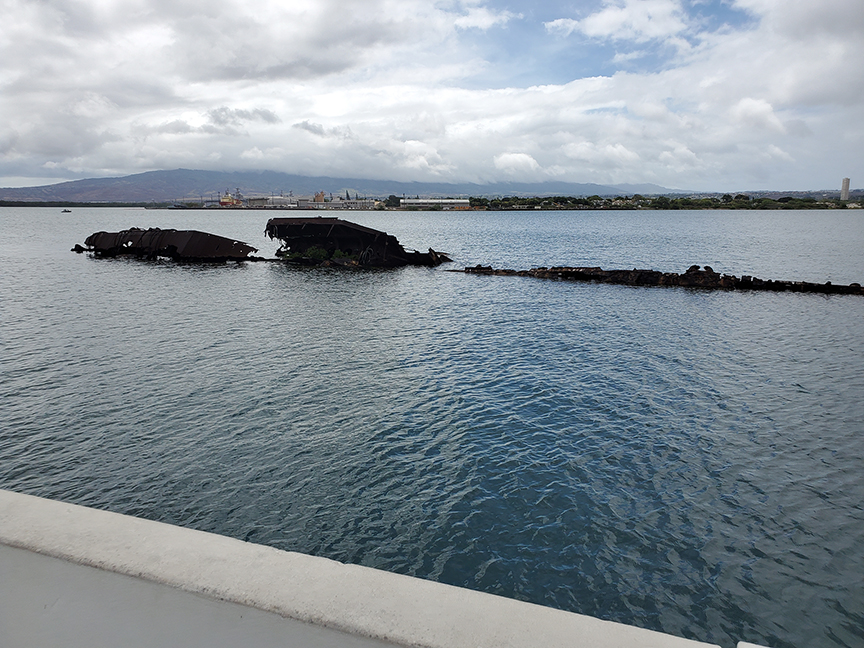
The USS Utah capsized after being struck by two torpedoes. 58 of her sailors were killed.
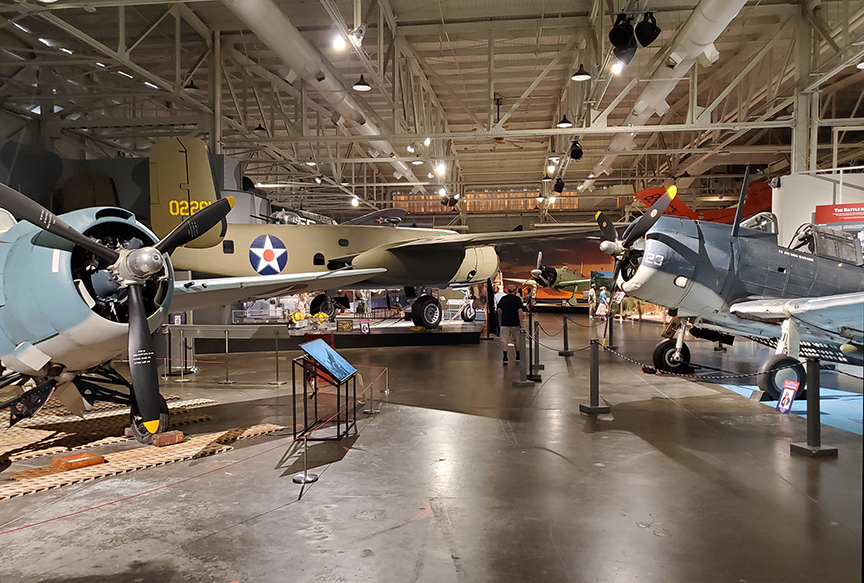
Hangar 37 at the Pearl Harbor Aviation Museum.
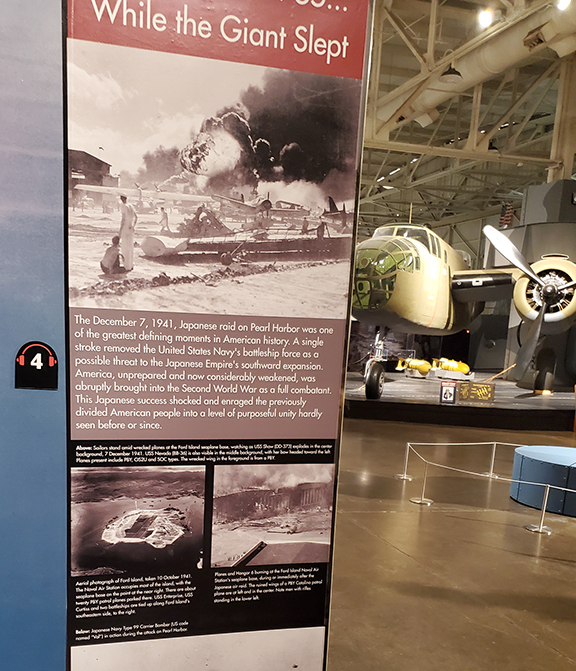
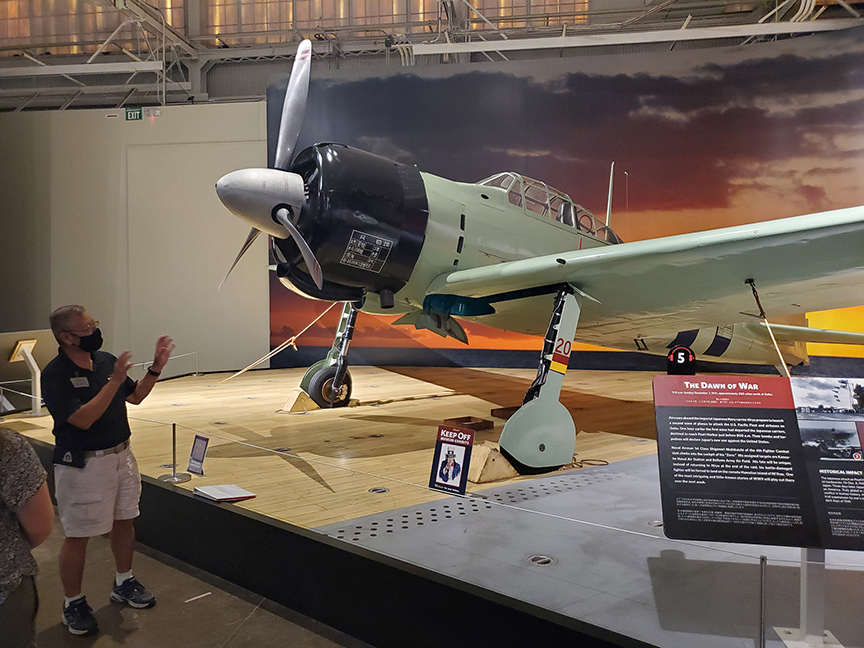
Ford is a retired Army sergeant and police officer.
When he retired, one of his first projects at PHAM was the restoration of this WWII Japanese Zero.
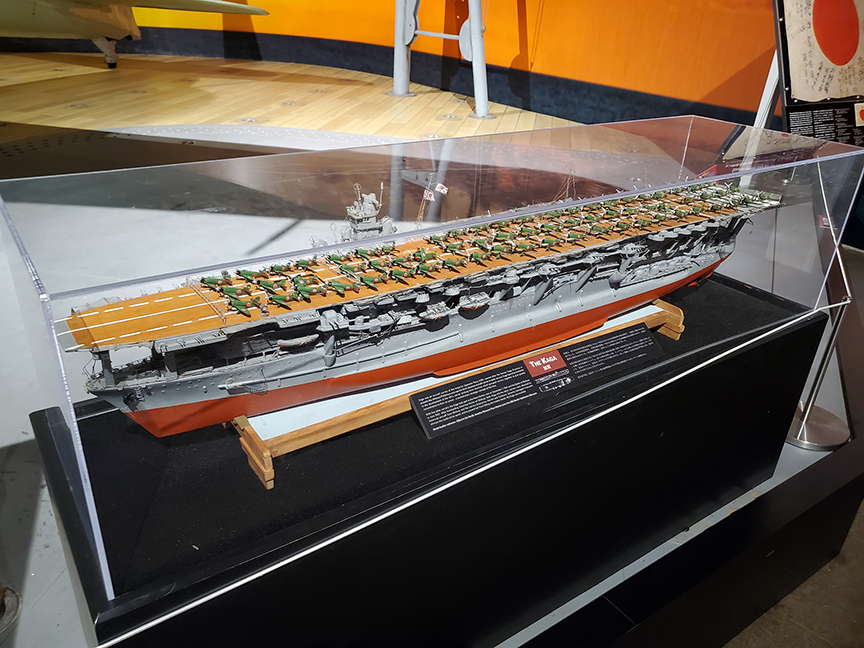
A model of one of the six Japanese carriers in the Kidō Butai task force that attacked Pearl Harbor. IJN "Kaga."
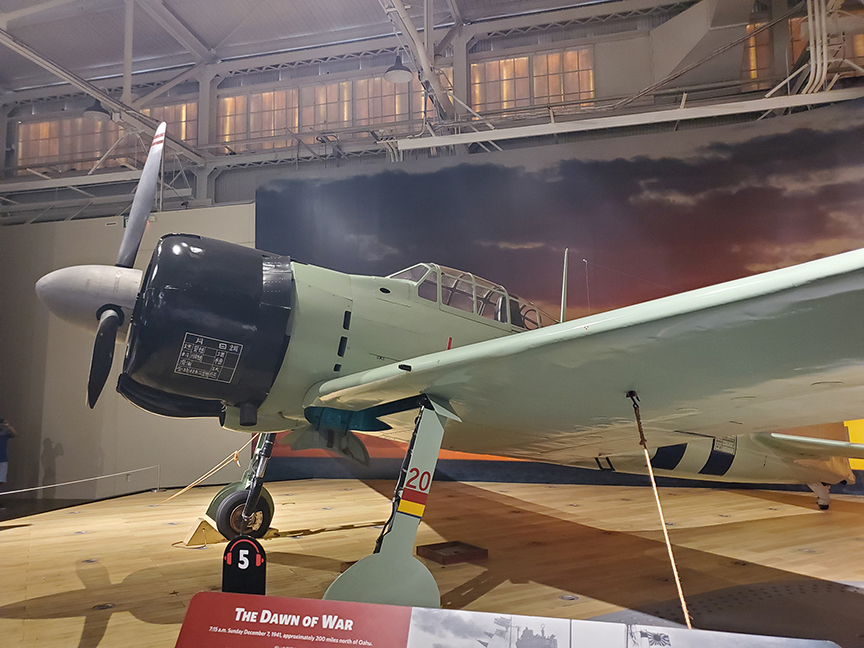
Ford's Zero is one of the most meticulously restored warbirds in any museum today.
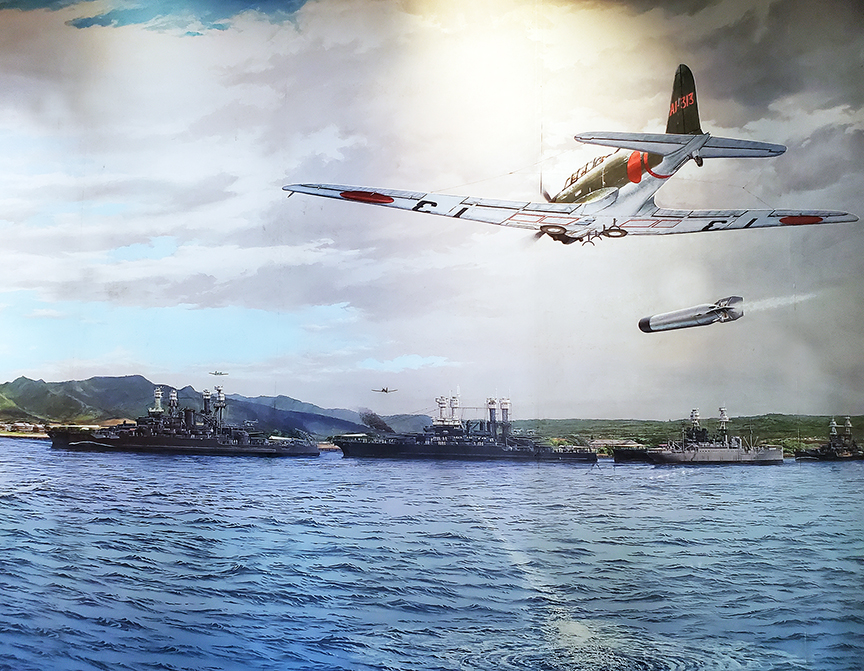
Artist depiction of a Japanese "Kate" launching a torpedo at Battleship Row on December 7.
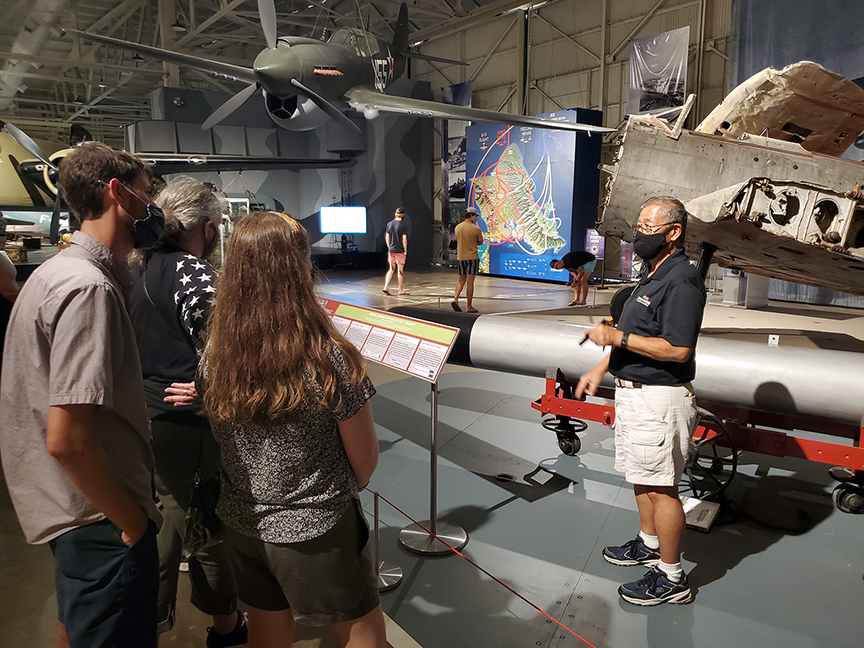
The wreckage of a Japanese "Kate" torpedo-bomber.
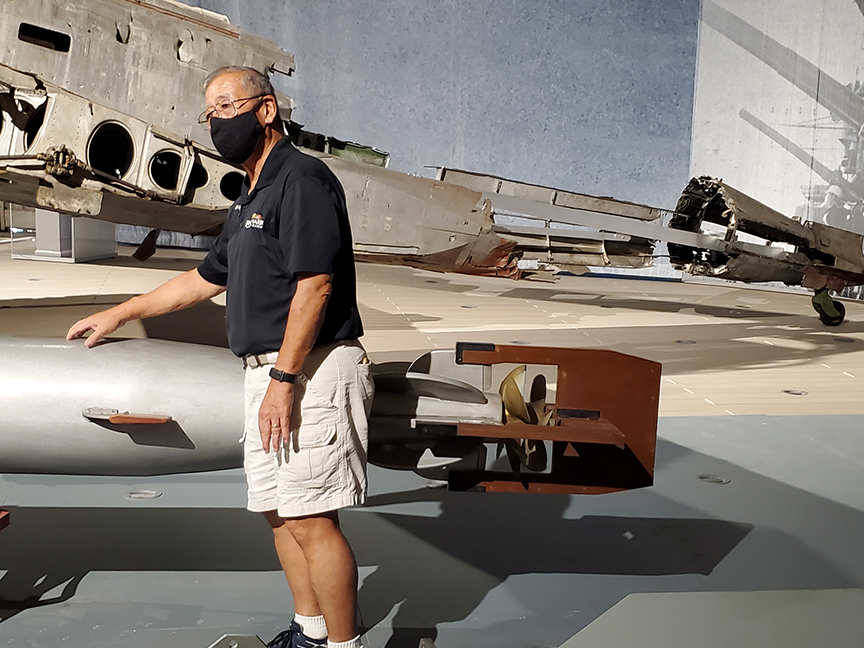
The wooden fins that enabled the Japanese torpedos to move through Pearl Harbor's shallow water.
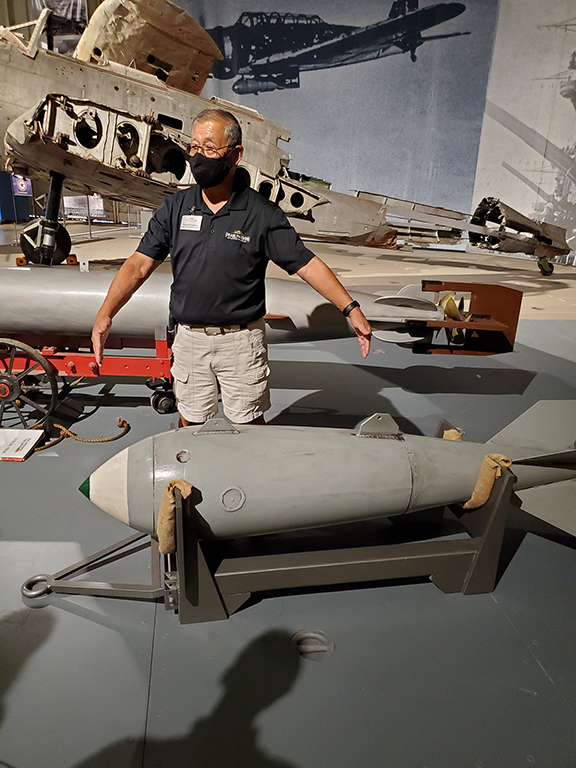
A Japanese armor piercing bomb like the one that struck the fatal blow to the USS Arizona.
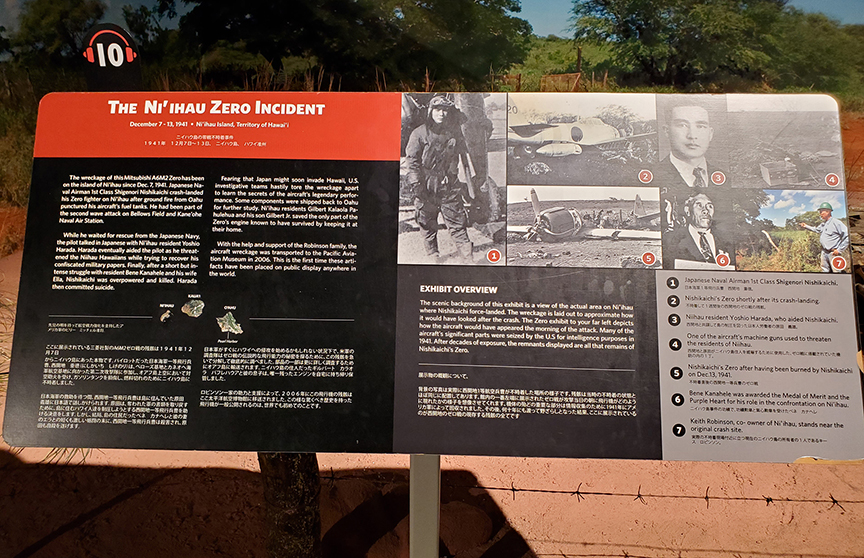
One of the most fascinating stories I've ever heard about Pearl Harbor. Definitely google it.
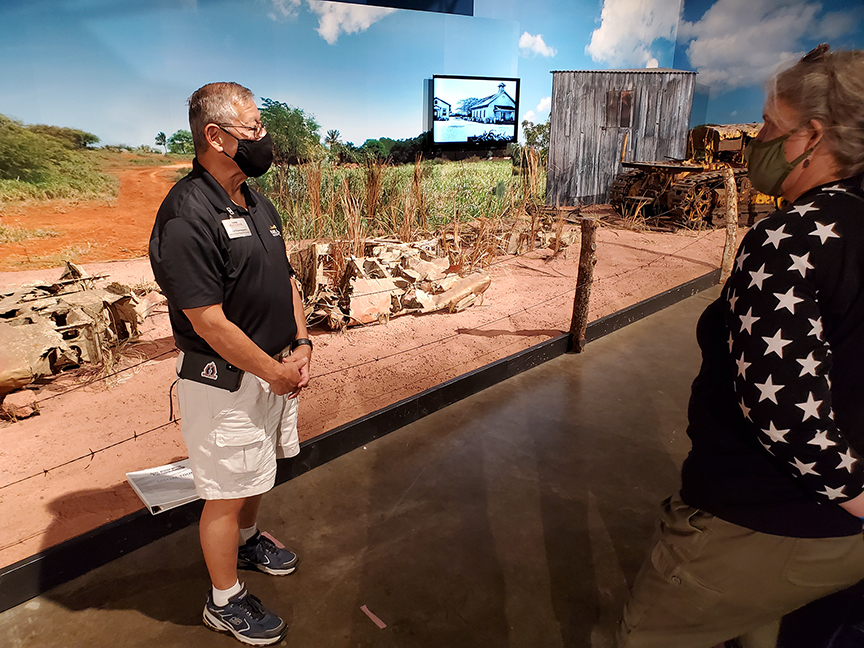
The wreckage of Japanese Airman First Class, Shigenori Nishikaichi's Zero. He crash landed at Ni'ihau and later burned his plane.
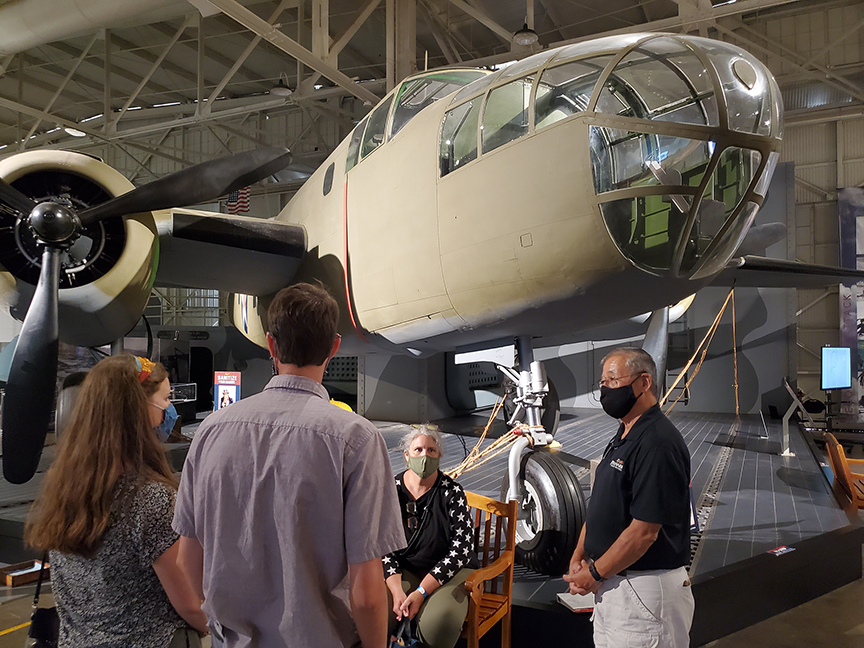
A B-25 Mitchell depicting the Doolittle Raid.
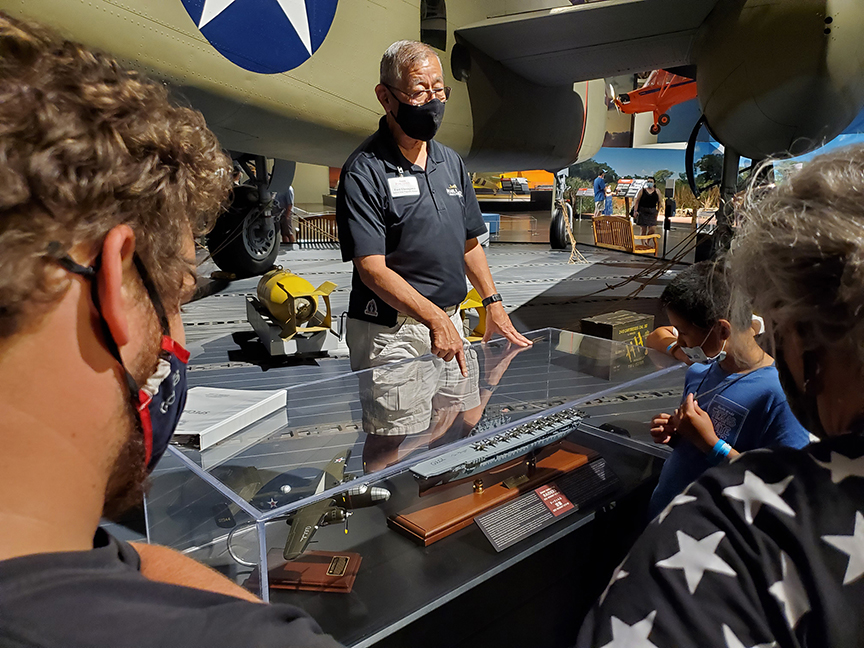
Model of the USS Hornet and a B-25 signed by Doolittle Raiders including my friend, Col. Dick Cole (Jimmy Doolittle's co-pilot)
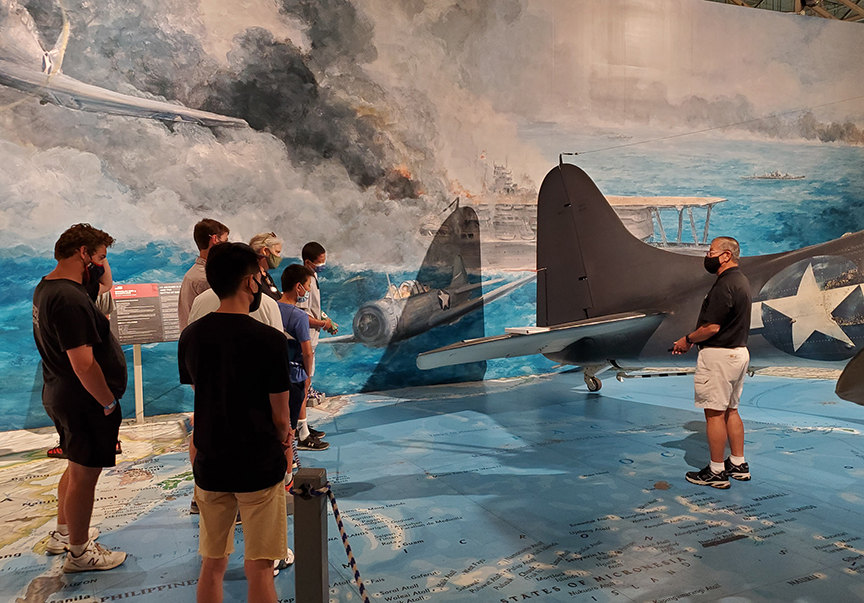
Battle of Midway display.
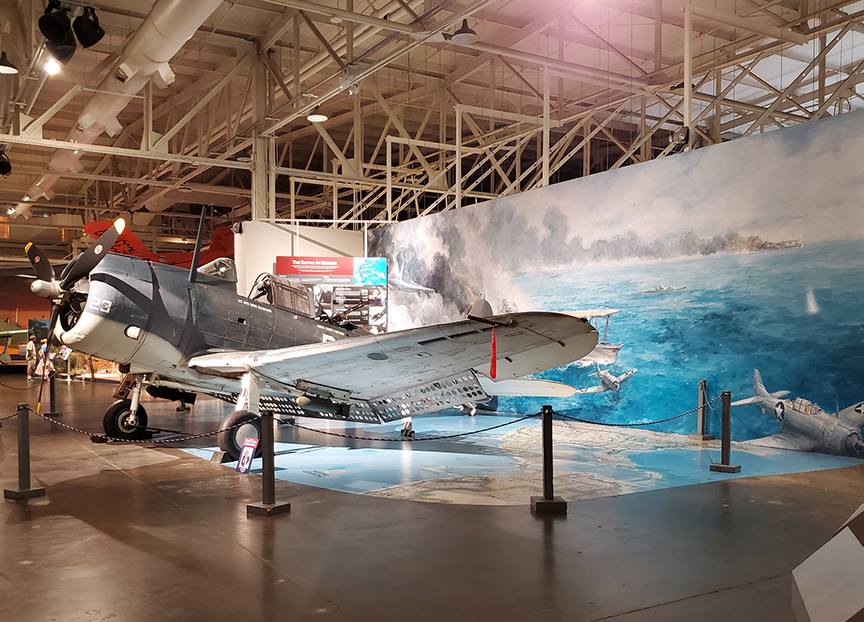
A SBD Dauntless dive bomber and mural depicting the "turning of the tide" in the Pacific War,
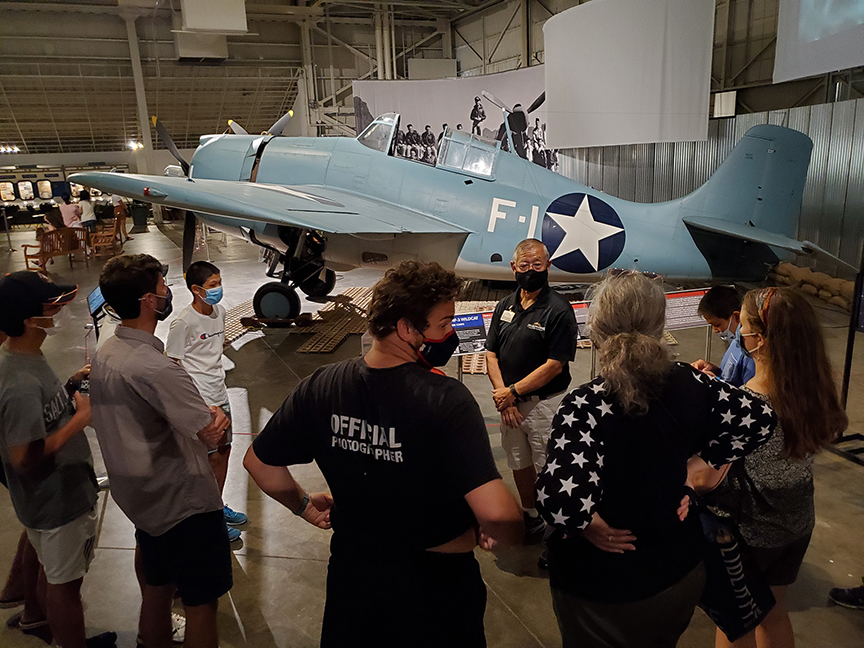
Ford telling us about the F4F Wildcat and "Cactus Air Force."
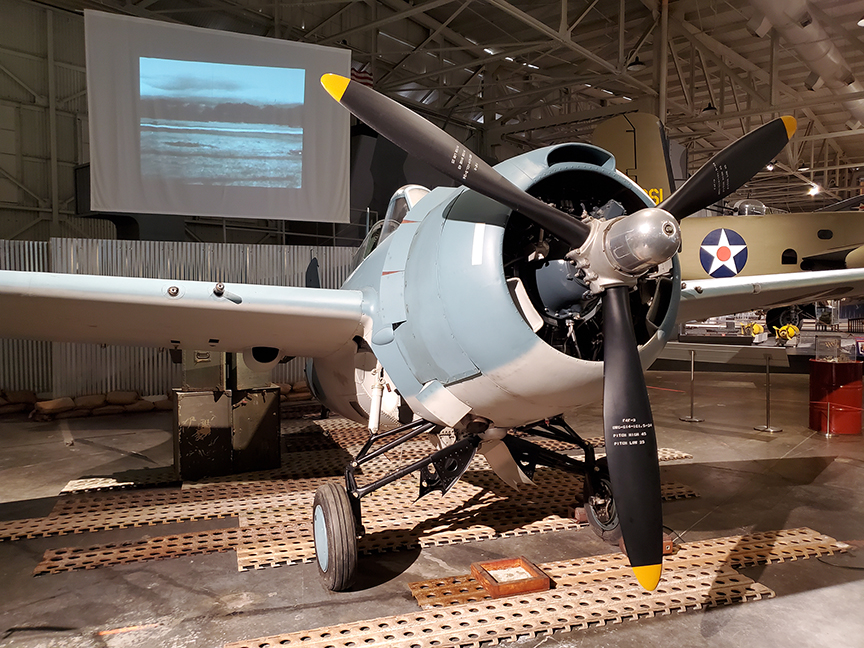
The rugged F4F Wildcat.
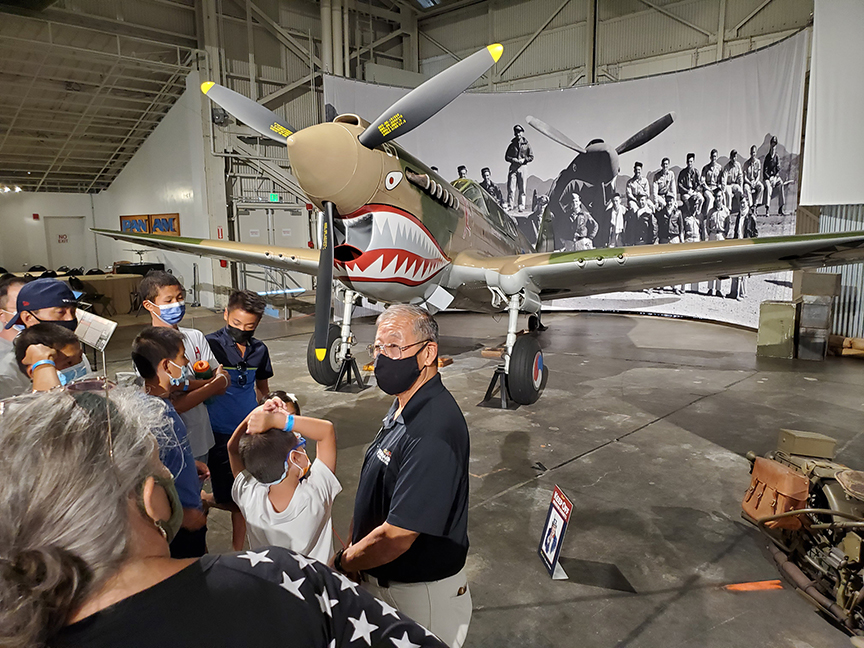
Beautiful P-40 Flying Tiger and photo of the American Volunteer Group in China.
The iconic Ford Control tower and a vintage fire truck.
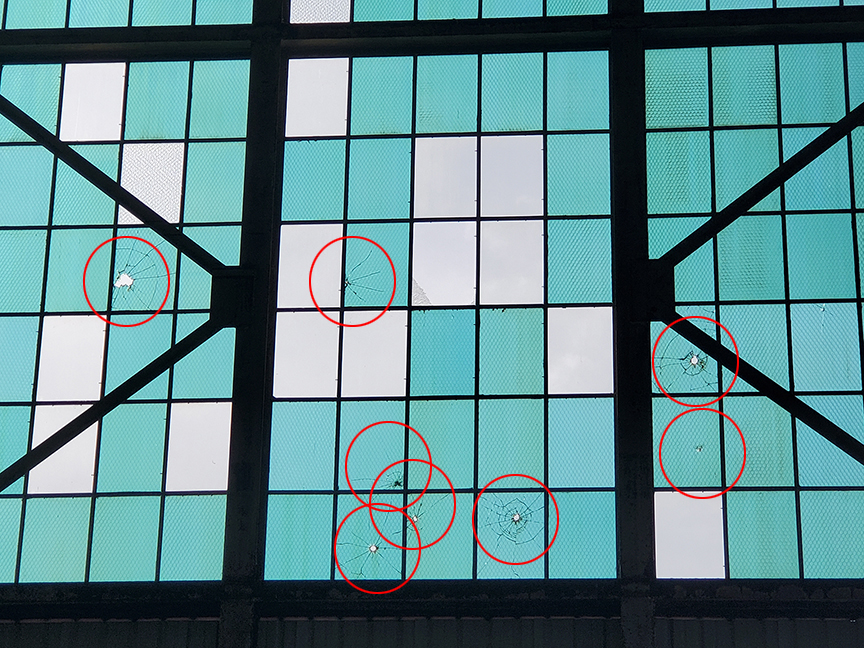
Bullet holes from enemy or friendly fire on December 7 in PHAM's Hangar 39, known as the Restoration Hangar.
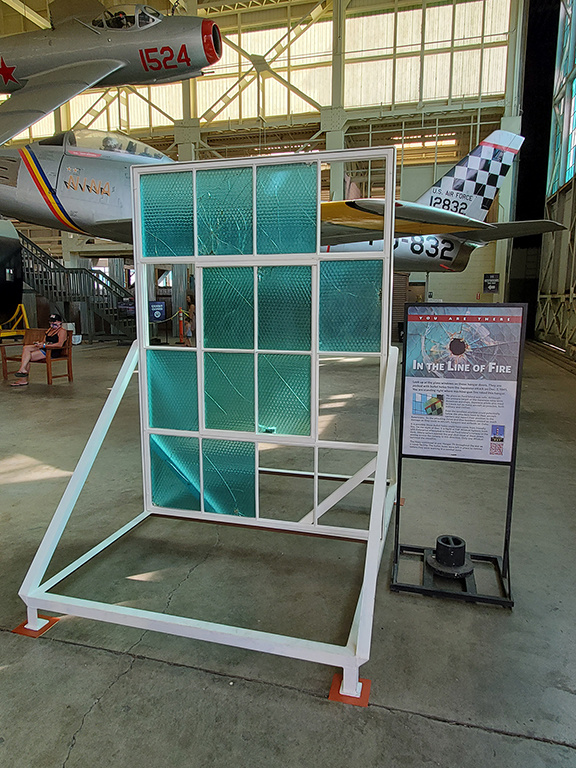
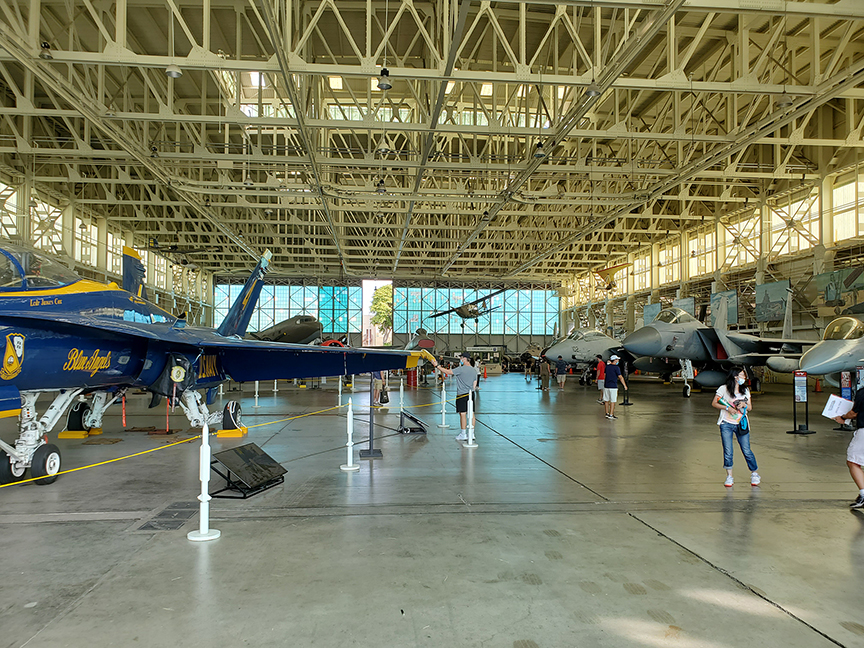
Hangar 39 is dominated by some beautiful jet aircraft.
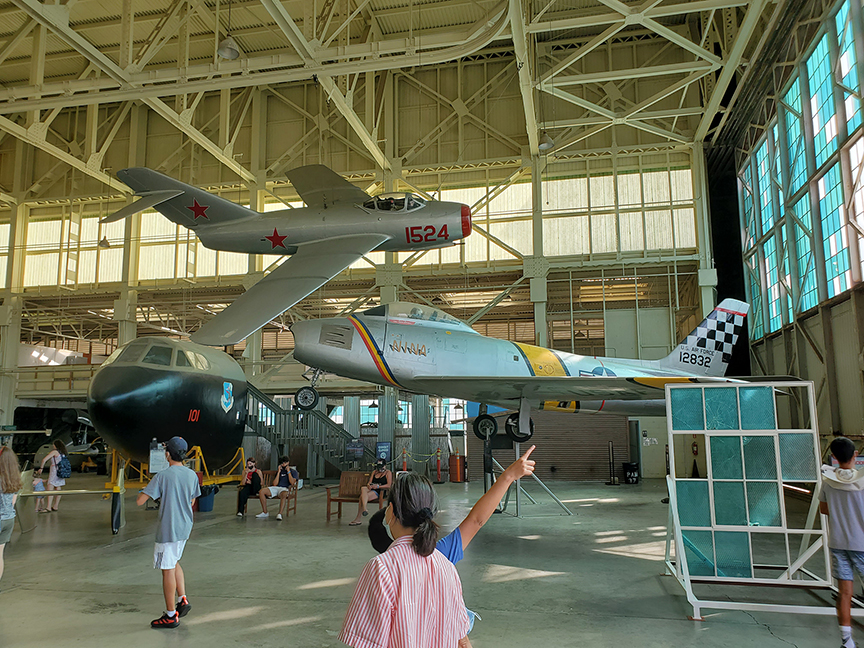
A F-86 and Mig 15 depict "Mig Alley" in the Korean War.
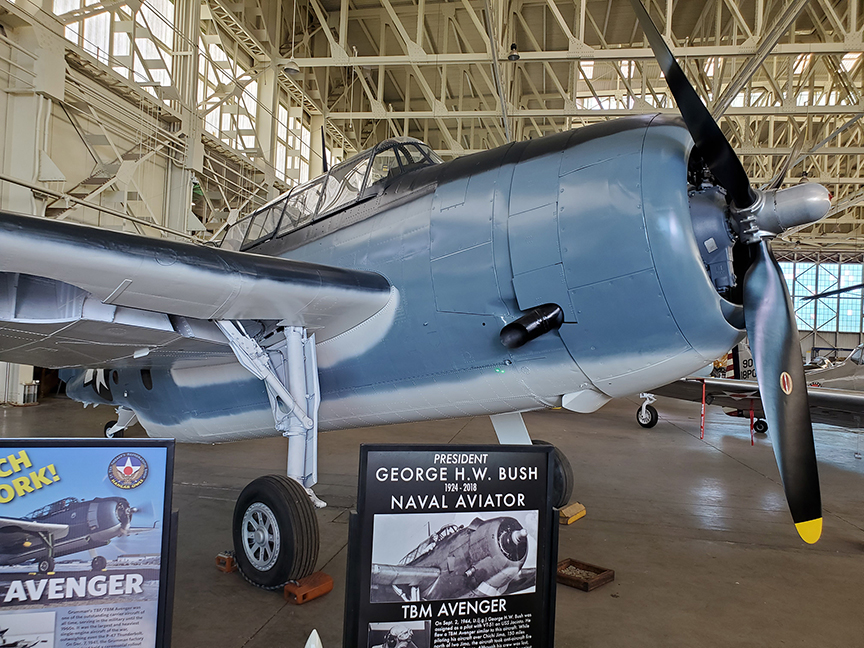
A warbird in the markings of Lt. George HW Bush's Grumman TBD Avenger.
The most famous inhabitant of Hangar 39, the B-17 Flying Fortress "Swamp Ghost."
The story of "Swamp Ghost" and the Disney connection.

Early WWII markings and bullet holes in the fuselage.
Bombs - probably 500 pounders.
Cannon and machine gun fire impacts to the tail.
Me, Ford, Micah, Katie, Whitney, and Kurtis.
Thank you Ford for an incredible tour of Ford Island and the Pearl Harbor Aviation Museum.

